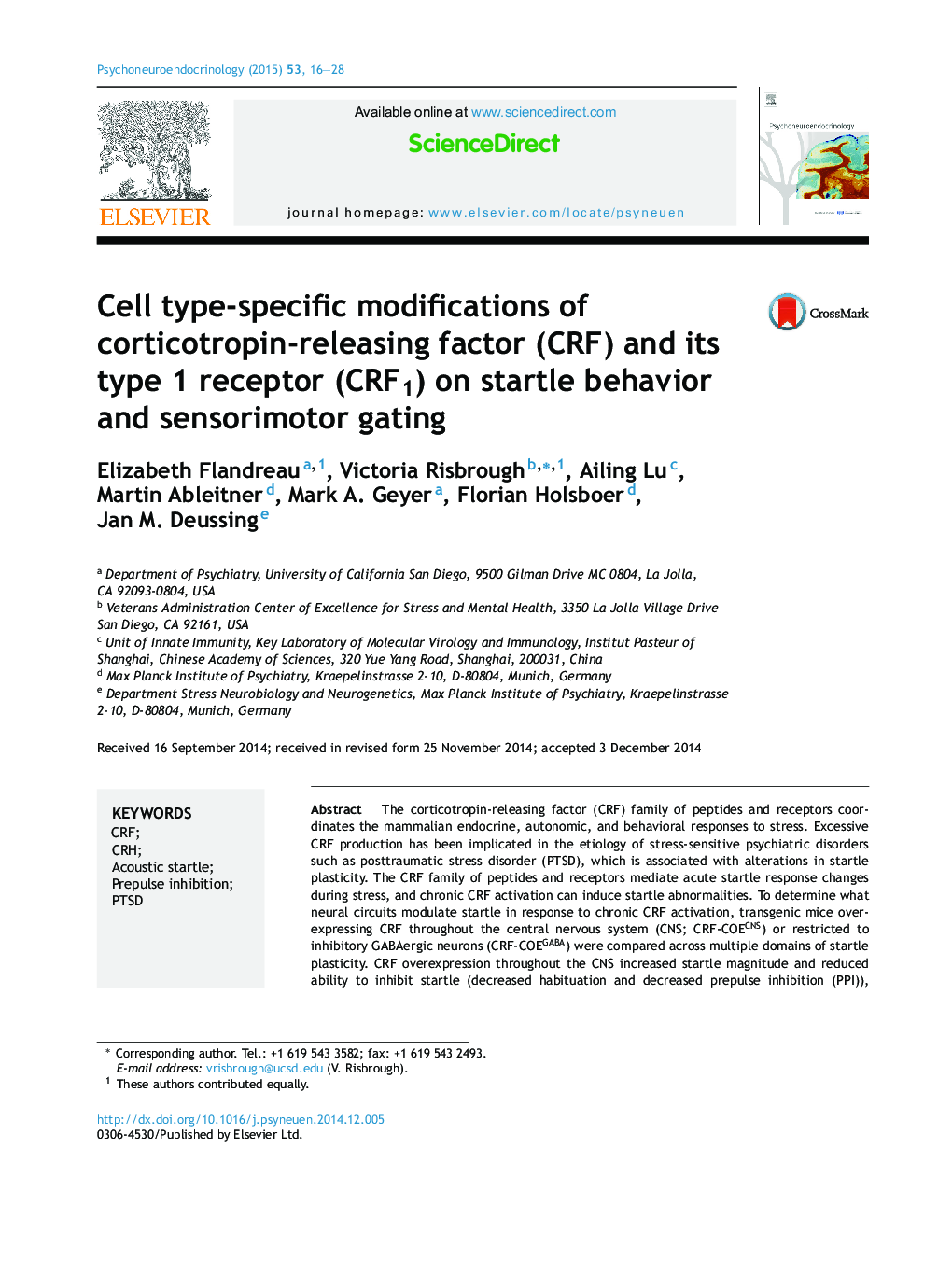| کد مقاله | کد نشریه | سال انتشار | مقاله انگلیسی | نسخه تمام متن |
|---|---|---|---|---|
| 6819053 | 547401 | 2015 | 13 صفحه PDF | دانلود رایگان |
عنوان انگلیسی مقاله ISI
Cell type-specific modifications of corticotropin-releasing factor (CRF) and its type 1 receptor (CRF1) on startle behavior and sensorimotor gating
دانلود مقاله + سفارش ترجمه
دانلود مقاله ISI انگلیسی
رایگان برای ایرانیان
کلمات کلیدی
موضوعات مرتبط
علوم زیستی و بیوفناوری
بیوشیمی، ژنتیک و زیست شناسی مولکولی
علوم غدد
پیش نمایش صفحه اول مقاله

چکیده انگلیسی
The corticotropin-releasing factor (CRF) family of peptides and receptors coordinates the mammalian endocrine, autonomic, and behavioral responses to stress. Excessive CRF production has been implicated in the etiology of stress-sensitive psychiatric disorders such as posttraumatic stress disorder (PTSD), which is associated with alterations in startle plasticity. The CRF family of peptides and receptors mediate acute startle response changes during stress, and chronic CRF activation can induce startle abnormalities. To determine what neural circuits modulate startle in response to chronic CRF activation, transgenic mice overexpressing CRF throughout the central nervous system (CNS; CRF-COECNS) or restricted to inhibitory GABAergic neurons (CRF-COEGABA) were compared across multiple domains of startle plasticity. CRF overexpression throughout the CNS increased startle magnitude and reduced ability to inhibit startle (decreased habituation and decreased prepulse inhibition (PPI)), similar to previous reports of exogenous effects of CRF. Conversely, CRF overexpression confined to inhibitory neurons decreased startle magnitude but had no effect on inhibitory measures. Acute CRF receptor 1 (CRF1) antagonist treatment attenuated only the effects on startle induced by CNS-specific CRF overexpression. Specific deletion of CRF1 receptors from forebrain principal neurons failed to alter the effects of exogenous CRF or stress on startle, suggesting that these CRF1 expressing neurons are not required for CRF-induced changes in startle behaviors. These data indicate that the effects of CRF activation on startle behavior utilize an extensive neural circuit that includes both forebrain and non-forebrain regions. Furthermore, these findings suggest that the neural source of increased CRF release determines the startle phenotype elicited. It is conceivable that this may explain why disorders characterized by increased CRF in cerebrospinal fluid (e.g. PTSD and major depressive disorder) have distinct symptom profiles in terms of startle reactivity.
ناشر
Database: Elsevier - ScienceDirect (ساینس دایرکت)
Journal: Psychoneuroendocrinology - Volume 53, March 2015, Pages 16-28
Journal: Psychoneuroendocrinology - Volume 53, March 2015, Pages 16-28
نویسندگان
Elizabeth Flandreau, Victoria Risbrough, Ailing Lu, Martin Ableitner, Mark A. Geyer, Florian Holsboer, Jan M. Deussing,